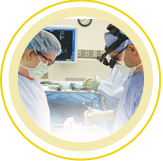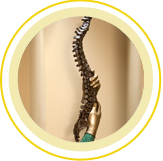80% of Americans will experience back pain at some point in their lives. It may come from work issues, playing sports, or just putting on their shoes. Sciatica and sacroiliitis are common among these. Dull ache vs shooting pain is just one difference between the two conditions. The symptoms, causes, and treatments for these two conditions are different. What is the difference between sciatica and sacroiliitis?
Symptoms of Sciatica and Sacroiliitis
You can tell the difference between the two back conditions by the different symptoms.
With sciatica you will experience sharp shooting pain, burning in the lower back, leg pain and numbness in the affected leg. It includes radiating pain that moves from the lumbar region and continues through the buttocks and back of your legs. Usually this occurs only on one side.

With sacroiliitis the symptoms include a dull ache in the buttocks, lower back, and hip. Consistent pain in the lower back and buttocks is a key symptom. The pain can radiate to the groin, legs, and feet.
The two do have shared symptoms sometimes making it difficult to diagnose. For example, when you have pain from sciatica, the placement of the nerves extending from the spine are likely pinched, and are very close to the sacroiliac, or SI, joint.
Other common symptoms of sciatica and sacroiliitis include the following:
- Pain and tingling in lower extremities
- Instability or weakness in the affected leg
- Sitting in one position causes the pain to get worse
- Feeling pain more on one side than balanced
Other conditions mistaken for these symptoms include herniated disc in the lower back, lumbar spinal stenosis, osteoarthritis, a stress fracture, plus others.
The Causes Are Quite Different
What Causes Sciatica?
Sciatica takes place in the sciatic nerve due to compression or irritation of the nerve root exiting the spine. The sciatic nerve is the largest in our body and extends from the lower back to our feet.
What Causes Sacroiliitis?
Sacroiliitis is an inflammation within the sacroiliac joint where the sacrum and ilium connect. This is caused by damage or wear and tear to the joint. Climbing stairs, running, prolonged standing, and bearing more weight on one foot can aggravate the SI joint.
It is actually possible to have both conditions at the same time.
Treatment Options for Sciatica and Sacroiliitis
Someone dealing with the pain and symptoms from either condition can successfully treat with ice, medications, stretching, therapeutic injections, and physical therapy. The main goals are improving core strength, stretching tight and inflexible muscles like hamstrings, and performing light aerobic exercise like walking, swimming, and pool therapy.
How Is Sciatica Treated?
For sciatica, finding and managing the cause of the compression is the main goal.
When non-surgical treatments are not successful due to the severity of the cause, surgery may be indicated by Spine & Scoliosis Specialists.
How Is Sacroiliitis Treated?
For sacroiliitis specifically, the treatment depends on the underlying cause and duration of the symptoms. The goal is to improve joint function and prevent further damage.
Surgical treatment is rare and only recommended when non- surgical options do not produce results and pain relief. This is especially the case if the symptoms continue for months and the pain becomes worse.
Contact Spine & Scoliosis Specialists at 336.333.6306 for a thorough examination in High Point and Greensboro, NC if you are experiencing pain in your lower back and typical treatments are not producing results.



